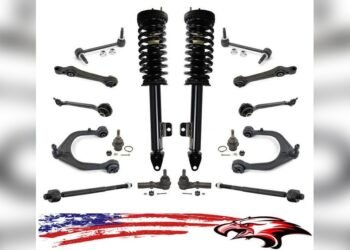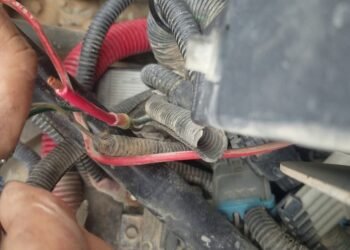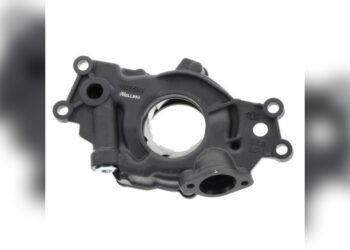Troubleshooting a Hyundai Tucson often involves identifying common issues like engine problems or electrical malfunctions. Quick diagnosis is key to resolving these efficiently.
The Hyundai Tucson, a compact SUV, has gained popularity for its blend of style, comfort, and reliability. Yet, like any vehicle, it’s not immune to problems. Owners frequently encounter issues ranging from minor electrical glitches to more significant engine troubles.
Understanding the most common problems and how to troubleshoot them can save time and money. This guide aims to arm Hyundai Tucson owners with essential troubleshooting tips, ensuring they can address common concerns swiftly and effectively. Keeping your Tucson running smoothly requires a proactive approach to maintenance and a keen eye for early signs of trouble. By staying informed and ready to tackle issues head-on, drivers can enjoy the performance and dependability Hyundai is known for.
Introduction To Hyundai Tucson Troubleshooting
The Hyundai Tucson, acclaimed for its reliability and performance, sometimes encounters issues. Owners must know common problems and fixes. This guide provides easy-to-follow troubleshooting tips for Tucson owners.
Common Issues Encountered
Hyundai Tucsons may face a range of problems. Drivers report these frequently:
- Engine performance dips
- Electrical glitches in the system
- Issues with the transmission shift
- Brake wear is quicker than normal
Identifying these issues early helps prevent costly repairs.
Benefits Of Diy Fixes
Handling car troubles by yourself has perks:
- It saves money on mechanic bills.
- You learn about your car’s workings.
- DIY fixes can be quick and convenient.
With the right tools and guidance, many Tucson issues are manageable at home.

Credit: m.youtube.com
Starting Problems
Many drivers face issues when starting their Hyundai Tucson. A car that won’t start can be frustrating. Let’s troubleshoot common problems and find solutions.
Battery Check And Solutions
Car batteries are crucial for starting engines. A weak or dead battery could be the culprit.
Perform these steps to check your battery:
- Inspect the battery terminals. Look for corrosion.
- Clean terminals with a brush if needed.
- Ensure the connections are tight and secure.
- Test the battery voltage with a multimeter.
A healthy battery should read around 12.6 volts.
If the voltage is low, consider these solutions:
- Charge the battery.
- Jump-start the car with cables.
- If necessary, replace the battery.
Ignition System Quick Fixes
The ignition system is key to starting your Tucson. Issues here can prevent the engine from firing up.
| Problem | Quick Fix |
|---|---|
| Faulty Spark Plugs | Replace the spark plugs. |
| Bad Ignition Coil | Test and replace the coil if needed. |
| Worn Starter Motor | Check and replace the starter. |
Quick fixes can save time and money. Always check the car’s manual for specific instructions.
Engine Performance Issues
Many Hyundai Tucson owners may face engine performance issues at some point. These can range from minor annoyances to serious problems requiring immediate attention. Understanding the signs and knowing how to tackle them are vital for maintaining your vehicle’s health.
Identifying The Symptoms
Performance issues often come with warning signs. Look out for these:
- Reduced acceleration: Your Tucson may hesitate or feel sluggish.
- Irregular idling: The engine might idle roughly or stall unexpectedly.
- Poor fuel economy: Notice a sudden drop in miles per gallon.
- Check engine light: This light could signal multiple issues.
Air Filter Replacement Tips
A clean air filter is key for engine health. Follow these steps for replacement:
- Locate the air filter housing under the hood.
- Open the housing and remove the old filter.
- Insert a new filter and secure the housing.
Always choose the right filter for your model. This ensures peak performance. Remember to check the air filter every 12,000 miles. Change it every 15,000 to 30,000 miles, or as your manual suggests.
Regular maintenance keeps your Tucson running smoothly. Tackle engine issues early to avoid costly repairs. Stay vigilant and your Hyundai will thank you with reliable service.

Credit: www.reddit.com
Electrical Glitches
The Hyundai Tucson is known for its reliability, but like any vehicle, it can experience electrical issues. Electrical glitches can range from minor annoyances to major inconveniences. Understanding common problems and how to troubleshoot them can save time and money.
Fuses And Relays Guide
Hyundai Tucson’s electrical system relies on fuses and relays. They protect circuits from overloading. When electrical problems arise, check these components first. A blown fuse often causes system failures. Keep a fuse diagram handy. It shows locations for all fuses and relays.
Follow these steps:
- Locate the fuse box. It’s usually under the dashboard or hood.
- Open the cover. Check the diagram inside.
- Find the right fuse. Use a fuse puller or tweezers.
- Inspect the fuse. Look for a broken wire inside.
- Replace if necessary. Match the amp rating exactly.
- Test the system. Ensure the issue is resolved.
Troubleshooting Electrical Connections
Bad connections cause many electrical issues. Loose or corroded terminals can disrupt power flow. Inspect all connections regularly. Pay special attention to battery terminals. Clean any corrosion. Tighten loose connections. Use a multimeter to check for voltage drops. This helps identify bad connections. Look for signs of wear or damage on wiring. Replace or repair as needed.
- Check battery terminals for tightness and corrosion.
- Use dielectric grease to protect connections.
- Test switches and sockets with a multimeter.
- Look for frayed wires. Repair or replace them.
- Ensure ground connections are secure.
Regular maintenance prevents electrical glitches. Stay ahead of electrical issues in your Hyundai Tucson. Use this guide to troubleshoot effectively.
Air Conditioning Malfunctions
Hyundai Tucson’s air conditioning is key for comfort. It cools your car on hot days. Sometimes, it may stop working right. This section helps you spot and fix AC issues.
Identifying Ac Problems
AC issues can range from mild to severe. Signs include weak airflow, warm air, or odd noises. A bad smell indicates mold in the system. Check these first to diagnose the trouble.
- Weak Airflow: Could mean a clogged filter.
- Warm Air: Often a sign of low refrigerant levels.
- Noises: Usually linked to a failing compressor.
- Bad Odor: Suggests mold or mildew buildup.
Recharging The Ac System
A recharge may fix your AC. It fills the system with fresh refrigerant. This helps the AC cool the car again. A recharge kit helps you do this at home. Follow these steps carefully.
- Locate the AC Port: Find the low-pressure service port.
- Attach the Recharge Hose: Connect hose from the kit.
- Start the Engine: Turn on AC to max with the engine running.
- Recharge: Add refrigerant as instructed on the kit.
- Check the AC: Look for improved cooling.
Note: If problems persist, seek a professional mechanic.

Credit: www.reddit.com
Brake System Maintenance
Brake System Maintenance is vital for your Hyundai Tucson’s safety. Regular checks and replacements keep brakes responsive. Let’s discuss brake pads and fluid checks.
Brake Pads Replacement
Worn brake pads reduce braking efficiency. They need regular inspection and replacement. Here’s how to maintain them:
- Check brake pads every 15,000 miles.
- Listen for high-pitched squealing noises.
- Feel for any changes in braking response.
- Inspect for pad wear through the wheels.
Replace brake pads if thickness is below 3mm. Use only high-quality pads for best performance.
Brake Fluid Checks
Brake fluid is crucial for transmitting force. It needs to stay clean and at the right level. Follow these steps:
- Check fluid level in the reservoir.
- Ensure the fluid is clear, not cloudy.
- Replace fluid every two years.
- Use the correct type of brake fluid.
Low or dirty fluid can cause brake failure. Maintain fluid levels to avoid this risk.
Suspension And Steering Problems
The smooth ride of a Hyundai Tucson can be disrupted by suspension and steering issues. These problems may affect comfort, handling, and safety. Understanding common issues helps drivers address them promptly. This section dives into the typical suspension and steering difficulties Tucson owners might encounter.
Common Suspension Issues
Hyundai Tucson drivers might notice several suspension-related symptoms. These can range from a rough ride to unusual noises. Let’s explore some frequent suspension complications.
- Worn-out shock absorbers lead to a bouncy ride.
- Strut problems may cause knocking sounds.
- Bushings wear out, resulting in steering wander.
Detecting these signs early can save costs on repairs. Regular checks ensure the suspension system remains in top shape.
Steering System Fixes
Steering is critical for vehicle control. Hyundai Tucson owners can face steering challenges. These fixes can often restore proper steering function.
- Check power steering fluid levels. Top up if low.
- Inspect steering belts for wear. Replace as needed.
- Ensure the steering rack is tight and secure.
For persistent issues, professional diagnosis is key. Certified mechanics provide reliable solutions for steering troubles.
Transmission Troubles
The Hyundai Tucson is a reliable SUV. But transmission issues can arise. Recognizing these problems early is key. This ensures your Tucson remains safe and efficient. Let’s dive into the common transmission troubles and how to handle them.
Recognizing Transmission Issues
- Delayed Engagement: The car hesitates before moving.
- Strange Noises: Whining or clunking sounds signal trouble.
- Shifting Problems: Gears shift oddly or slip unexpectedly.
- Warning Lights: The dashboard may show transmission alerts.
- Fluid Leaks: Reddish fluid under the car indicates a leak.
Fluid And Filter Changes
Regular maintenance prevents transmission issues. Fluid and filter changes are crucial. They keep the transmission running smoothly. Below is a guide to help you.
| Service | Interval | Benefit |
|---|---|---|
| Fluid Check | Monthly | Ensures proper levels |
| Fluid Change | 30,000-60,000 miles | Refreshes fluid quality |
| Filter Replacement | Every fluid change | Removes debris |
Remember to use the right fluid type for your Tucson. Check the owner’s manual or consult a professional. Proper care keeps your transmission in top shape.
Conclusion: Preventive Measures & Regular Maintenance
Keeping your Hyundai Tucson in top shape is crucial. Regular maintenance and preventive measures can save you from unexpected troubles. Let’s explore how to keep your Tucson running smoothly.
Adopting A Maintenance Schedule
Start with a solid maintenance schedule. This plan keeps your car healthy. Follow the manufacturer’s guidelines. They know what’s best for your Tucson.
- Oil changes keep the engine happy.
- Tire rotation ensures even wear.
- Checking fluid levels prevents engine damage.
Mark your calendar. Set reminders. Staying on track is easy with a plan.
When To Seek Professional Help
Sometimes, DIY won’t cut it. Know when to call the experts. Strange noises, warning lights, or performance drops are signs. Don’t wait. Early fixes save money and stress.
| Issue | Action |
|---|---|
| Warning lights on | Visit a mechanic ASAP |
| Unusual noises | Get it checked |
| Performance drop | Seek professional advice |
Remember, experts can spot issues we miss. Trust them to keep your Tucson safe.
Frequently Asked Questions
What Is The Most Common Problem With The Hyundai Tucson?
The most common problem with the Hyundai Tucson involves transmission issues, particularly in earlier models.
Why Won’t My Hyundai Tucson Start?
Your Hyundai Tucson may not start due to a dead battery, faulty ignition switch, failed starter, or empty fuel tank. Check these components for any issues.
Where Is The Reset Button On Hyundai Tucson?
The reset button on a Hyundai Tucson is typically found inside the fuse box, located under the steering wheel on the driver’s side. Consult your owner’s manual for exact placement as it can vary by model year.
What Is A Common Fault With Hyundai?
A common issue with Hyundai vehicles is the failure of the electrical and engine components, leading to performance problems.
Why Does My Hyundai Tucson Not Start?
A dead battery, faulty starter, or ignition issue could prevent your Tucson from starting. Check the electrical connections and battery health first.
Conclusion
Tackling issues with your Hyundai Tucson doesn’t have to be daunting. With the right approach, common problems can be swiftly addressed. Remember, regular maintenance is key to a smoothly running vehicle. For more complex issues, consulting a professional is always wise.
Drive safe and enjoy your Tucson’s reliable performance.
















